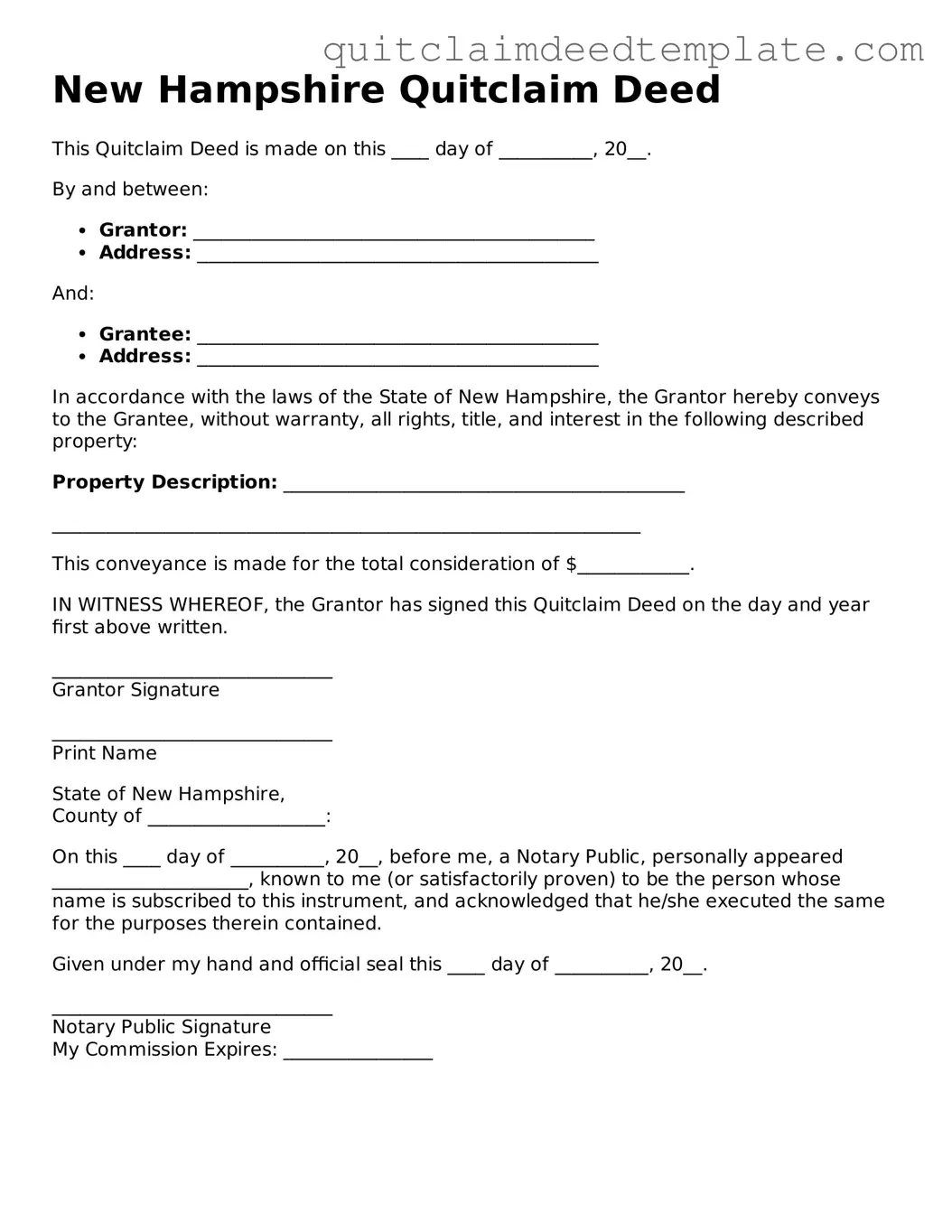Documents used along the form
When dealing with property transfers in New Hampshire, a Quitclaim Deed is often accompanied by several other important documents. Each of these documents plays a vital role in ensuring a smooth and legally sound transaction. Below is a list of commonly used forms alongside the Quitclaim Deed.
- Property Transfer Tax Declaration: This form must be filed with the Quitclaim Deed to report the sale price of the property. It helps the state assess the appropriate property transfer tax.
- Affidavit of Title: This document is used to affirm that the seller holds clear title to the property. It provides assurance to the buyer that there are no outstanding claims or liens against the property.
- Notice of Sale: This is a formal notification that the property has been sold. It may be required to inform local authorities and can help prevent disputes regarding ownership.
- Purchase and Sale Agreement: This contract outlines the terms of the sale between the buyer and seller. It includes details such as the sale price, contingencies, and closing date, serving as a roadmap for the transaction.
Understanding these accompanying documents is essential for anyone involved in a property transfer. Properly preparing and filing these forms can help avoid legal complications and ensure a successful transaction.
